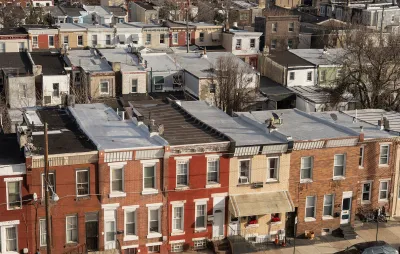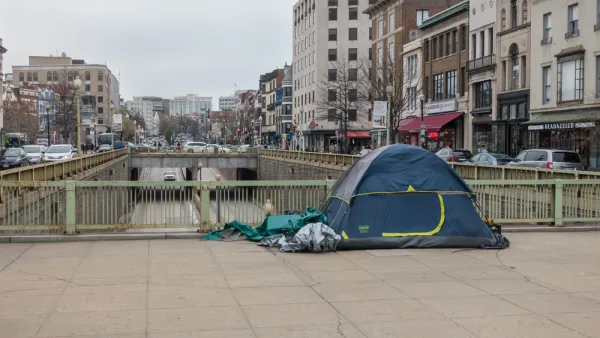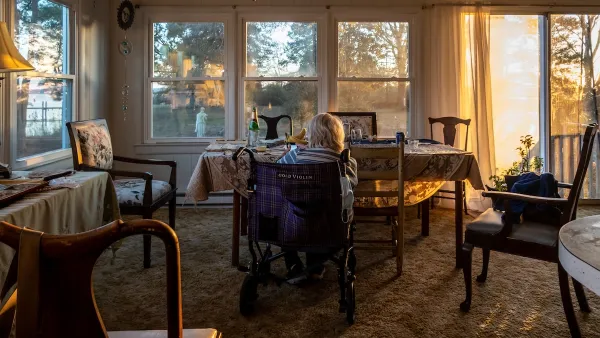A new study highlights the important role of emergency relief funding and eviction bans in stemming the rise of homelessness even as more families became housing-insecure.

Writing in Bloomberg CityLab, Kriston Capps outlines the concerns raised by a new analysis from the U.S. Department of Housing and Urban Development (HUD) that shows how eviction moratoriums and other emergency assistance programs launched during the pandemic helped prevent many Americans from falling into homelessness.
Officials describe this as an under-heralded success story of the pandemic emergency response. It’s also a warning about a still-urgent threat: In the wake of emergency relief efforts, homelessness is rising once again.
The study reveals that the number of households spending over 50 percent of their income on housing—the “worst-case housing needs”—hit a record 8.5 million household in 2021, yet sheltered homelessness decreased by 17 percent between 2019 and 2021. This is due to the “massive intervention” consisting of $47 billion in federal rental assistance and eviction moratoriums that kept many families with precarious housing situations in their homes.
Some key takeaways: “Pandemic interventions demonstrated that it’s possible to combat the routine use of evictions as a rent collection tool by combining legal aid with financial support.” Additionally, “Rapid rehousing, permanent supportive housing and other tools associated with the “housing first” model are the best options for dialing back homelessness, according to the analysis. And above all, homelessness is a housing problem, so building more rental housing at all levels of affordability is key to reducing the problems that lead to displacement.”
The study highlights an urgent warning: As pandemic relief programs end and housing instability remains a growing problem, “worst-case housing needs still represent an emergency.”
FULL STORY: Housing Instability Spiked During the Pandemic. Homelessness Didn’t.

Analysis: Cybertruck Fatality Rate Far Exceeds That of Ford Pinto
The Tesla Cybertruck was recalled seven times last year.

National Parks Layoffs Will Cause Communities to Lose Billions
Thousands of essential park workers were laid off this week, just before the busy spring break season.

Retro-silient?: America’s First “Eco-burb,” The Woodlands Turns 50
A master-planned community north of Houston offers lessons on green infrastructure and resilient design, but falls short of its founder’s lofty affordability and walkability goals.

Test News Post 1
This is a summary

Analysis: Cybertruck Fatality Rate Far Exceeds That of Ford Pinto
The Tesla Cybertruck was recalled seven times last year.

Test News Headline 46
Test for the image on the front page.
Urban Design for Planners 1: Software Tools
This six-course series explores essential urban design concepts using open source software and equips planners with the tools they need to participate fully in the urban design process.
Planning for Universal Design
Learn the tools for implementing Universal Design in planning regulations.
EMC Planning Group, Inc.
Planetizen
Planetizen
Mpact (formerly Rail~Volution)
Great Falls Development Authority, Inc.
HUDs Office of Policy Development and Research
NYU Wagner Graduate School of Public Service




























